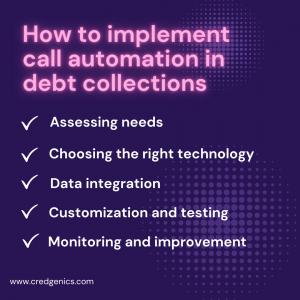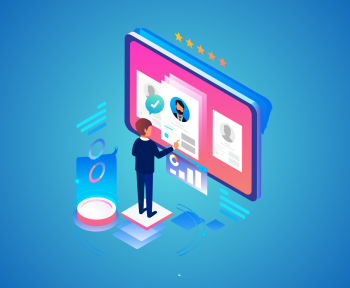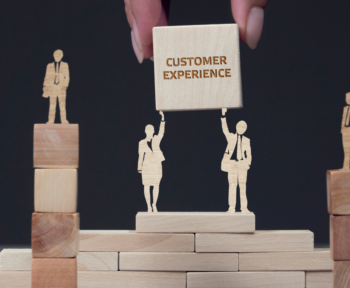With retail lending evolving rapidly, staying ahead on the transformation curve is pivotal for banks and other financial services companies. As the financial services industry transitions for the digital age, it is vital to deploy modern tools and strategies to recover debt efficiently. Call automation and debt collections are gradually merging and becoming synonymous to strengthen the recovery mechanisms, thanks to the rapid advancements in technology.
Owing to the large volume of cases involved, an intelligent and automated system for repetitive tasks such as reminders, follow-ups and processing payments is becoming indispensable. This not only reduces operational costs but also optimizes the entire collections workflow. It provides a consistent and standardized approach to interactions with debtors, minimizing the risk of error in the collection process. As a result, organizations can allocate their human resources strategically, focusing on more complex cases that require personalized attention while automating routine tasks for maximum productivity.
Consumers today also demand convenience and less intrusive communication. Automation enables personalized and non-intrusive interactions, offering multiple payment options and flexibility to meet customers’ needs. By providing 24/7 accessibility and addressing queries promptly, it aligns with the preferences of today’s tech-savvy consumers.
The evolution of debt collections
With advancements in technology and changing consumer behavior, traditional debt recovery methods are increasingly being challenged. Customers expect seamless and less intrusive interactions, making it imperative for the debt collection industry to adapt. This is where call automation steps in as a big enabler.
What is call automation?
Call automation, in the context of debt collections, involves leveraging advanced technologies such as artificial intelligence (AI) and interactive voice response (IVR) systems to streamline and enhance the debt recovery process. It integrates automation into the collection workflow, reducing manual intervention and optimizing the entire procedure.
Typically, the voice AI platform follows these steps:
- Initiates outbound calls according to predefined criteria.
- Engages with the customer to send payment reminders.
- Gathers propensity data and explores reasons for potential non-payment.
- Facilitates the transaction through a payment gateway if the customer indicates an immediate desire to make a payment.
- Encourages prompt payment or presents alternative payment options.
- Integrates collected data into the CMS (collection management software) and offers analytical insights for future actions.
- Executes an auto-callback upon request, automates retry attempts, and makes seamless transfers to agents when necessary.
The benefits of call automation in debt collections
- Increased efficiency
Automation significantly improves the efficiency of debt collection efforts. It can handle a large volume of calls simultaneously, send reminders, and process payments 24/7, ensuring no opportunity is missed.
- Enhanced customer experience
Modern consumers demand convenience and a less invasive approach to debt collections. Call automation allows for personalized and non-intrusive communication, offering multiple payment options and flexibility to meet customers’ needs.
- Cost reduction
By automating repetitive tasks, such as data entry and follow-up calls, organizations can reduce operational costs. This enables companies to allocate their resources more strategically, focusing on complex cases that require human intervention.
- Regulatory compliance
Debt collections is subject to strict regulations, and compliance is crucial. Call automation systems can be programmed to ensure adherence to legal requirements, thereby reducing the risk of compliance violations.
- Generates data-driven insights
Automation generates valuable data and insights into customer behavior and payment patterns. This information can be leveraged to tailor collection strategies and optimize recovery rates.
How do we implement call automation in debt collections?
The successful implementation of call automation in debt collections involves several key steps:
- Assessing needs and objectives
Organizations must first evaluate their specific debt collection needs and objectives, as understanding the scope of automation required is essential.
- Choosing the right technology
Selecting the appropriate call automation technology is crucial. This includes AI-powered chatbots, IVR systems, and predictive dialers. The organization’s objectives should be in line with the debt collections technology that is selected.
- Data integration
Integrating call automation systems with existing data sources, such as customer databases and payment platforms, ensures a seamless flow of information.
- Testing
Thorough testing is imperative to guarantee that the system operates seamlessly and delivers the desired customer experience.
- Continuous monitoring and improvement
Regularly monitoring the performance of the call automation system and gathering feedback from customers results in continuous improvement, ensuring that the system remains effective and compliant.

The future of debt collections
By 2025, AI is projected to drive 95% of customer interactions, indicating that nearly every 19 out of 20 customer engagements will involve AI assistance, as per Forbes research. In this respect, call automation is poised to reshape the debt collection landscape. Its ability to combine efficiency with an enhanced customer experience makes it a formidable tool for organizations seeking to optimize debt recovery efforts.
In the quest for more efficient and customer-centric debt collections, call automation stands out as a transformative solution. By harnessing the power of advanced technologies, organizations can not only streamline their debt recovery processes but also improve customer relationships and achieve compliance with evolving regulations. As the financial industry evolves, call automation will remain a pivotal element in the toolkit of debt collection professionals, driving success and innovation in this critical sector.
If you are looking to transform your debt collections strategy with the power of digital and data-powered insights, reach out to us to request an exploratory session at sales@credgenics.com or visit us at www.credgenics.com
FAQs:
- How do call automation and debt collections work together?
The relationship between call automation and debt collections is symbiotic and transformative. Call automation refers to the use of technology, often powered by artificial intelligence (AI) and interactive voice response (IVR) systems, to streamline and optimize the debt collection process. Call automation plays a pivotal role in debt collections by significantly enhancing efficiency, improving the customer experience, ensuring compliance with regulations, and providing valuable data-driven insights.
- How are lenders transitioning towards automated debt collections?
Lenders are transitioning towards an automated debt collections system through a strategic integration of technology and data-driven processes. Here are key steps and methods they are employing:
- Customized Communications: Automated systems allow lenders to send personalized messages and reminders to debtors, enhancing the customer experience. These messages can be tailored to individual preferences and situations, increasing the likelihood of successful payments.
- Interactive Voice Response (IVR) Systems: IVR systems enable automated communication with debtors through voice prompts and keypad inputs. They can handle routine inquiries, payment processing, and appointment scheduling, reducing the need for manual intervention.
- Chatbots and Virtual Assistants: Lenders are deploying AI-driven chatbots and virtual assistants on websites and mobile apps to engage with customers. These virtual agents can answer queries, provide payment options, and negotiate repayment terms.
- Predictive Dialers: Automated dialing systems, known as predictive dialers, are employed to optimize outbound call campaigns. They use algorithms to predict when agents will be available and connect them with debtors, increasing call efficiency.
- Integration with CRM Systems: Automation is integrated with Customer Relationship Management (CRM) systems to provide a holistic view of customer interactions. This helps in maintaining consistent and personalized communication.





